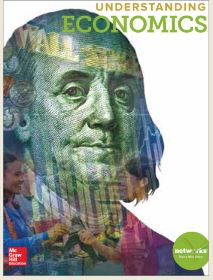

In the wake of President Trump’s election, a new form of protest has begun to emerge that goes beyond signs and chants: using the economy as a tool to effect change. Movements such as #grabyourwallet encourage participants to boycott companies that support Trump and his investments.
Last Thursday, immigrants across the United States gained international attention by participating in a nationwide one-day economic strike and boycott. Called the “Day Without Immigrants,” the movement was a protest of the Trump administration’s recent immigration policies.
What Happened?
The protest called for all immigrants, both legal and undocumented, to stay home from work or school, close their businesses, and refrain from shopping for one day. Though not organized by any specific group, the movement spread rapidly using social media. The goal was to show the impact of immigrants on the American economy, and to illustrate the ways in which our economy is sustained by immigrants and their labor. More than eight million undocumented immigrants are employed in the United States, especially in the construction and food service industries (23% of restaurant workers are foreign-born, and the number is even higher in construction).
Other groups showed their solidarity by participating in other creative ways. A Washington, D.C. restaurant remained open in order to show its customers firsthand how hard its immigrant employees work every day. A Chicago restaurant remained open as well, but took its show of support a step further, by donating a portion of the day’s revenue to immigrant and refugee rights groups. The Davis Museum at Wellesley College removed or covered the works of art in its collection that had been created or donated by immigrants: 120 pieces total.
What Was the Impact?

By some measures, the protest did not have the effect its participants had hoped for. It didn’t shut down the economy for the day, because most businesses stayed open. Some worry that the protest had the opposite effect, by causing people to become annoyed, rather than sympathetic to the immigrants’ message, when they faced longer lines or slower service on the day of the strike. Others, however, feel that the Thursday’s strike was a successful beginning to a much larger political movement.
Sadly, over 100 protestors across the country were fired after leaving work to participate in the protest. Supporters of the immigrants are using social media to encourage people to boycott the businesses which fired their employees for protesting.
What’s Next?
Using a widespread economic strike to show political or social dissatisfaction is not something that typically happens in the United States; the 1919 Seattle general strike is often considered to be the most recent example. However, many experts consider the “Day Without Immigrants” to be the first of many such strikes to come. In March, for example, a mass strike called “A Day Without Women” is already being planned as a follow-up to January’s Women’s March protests. A second, larger “Day Without Immigrants” is on the calendar for May 1, an internationally recognized day traditionally celebrating labor and labor activism.
